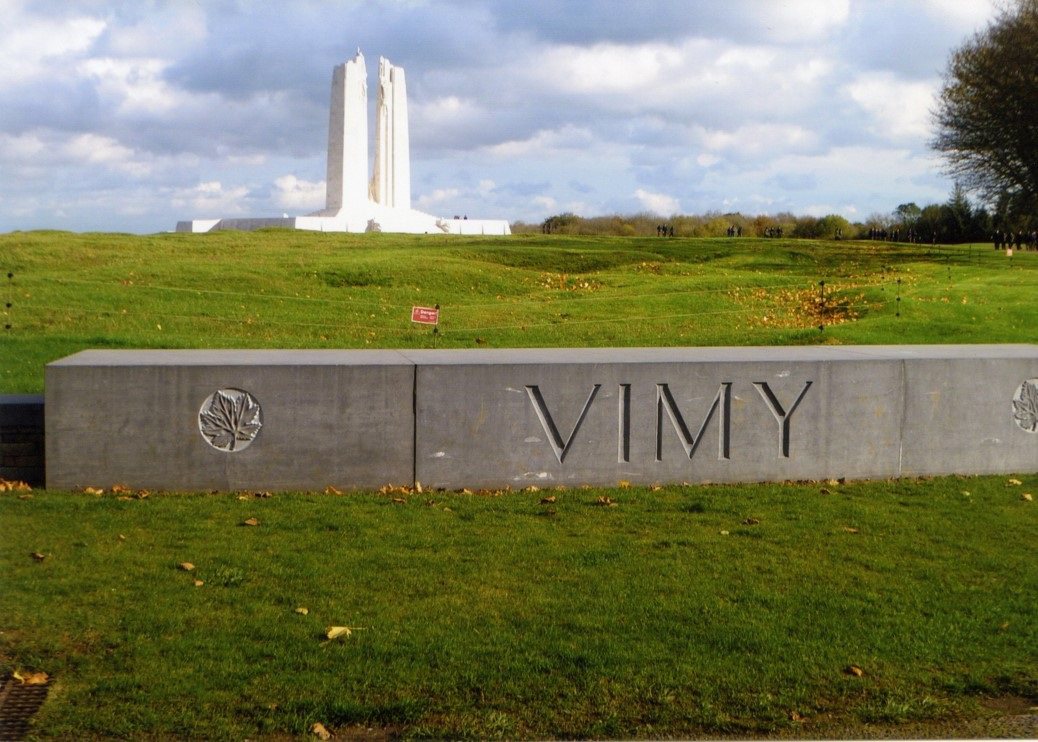On Sunday, April 9th, Canadians will be commemorating the centennial of the Battle of Vimy Ridge, the greatest Canadian victory of the First World War.
The victory has come to symbolize Canadian skill, Canadian might and Canadian spirit.
The glory and the suffering of the battle helped to weld a sense of national pride and comradeship. To many commentators and historians, the modern nation of Canada was born at Vimy.
The significance of Vimy Ridge to Canadians, and also to the Allied nations, was reinforced by what happened after the War was over.
In 1920, eight sites in northern France and Flanders were identified for Canadian commemorative war memorials. There was wide consensus that the most significant one should be at Vimy Ridge.
In 1922, the French government gifted 250 acres on the Ridge to the Canadian people. Hence, the site of the great victory became Canadian soil in perpetuity.
Walter Seymour Allward, considered to be one of Canada’s leading sculptors, was selected to design the grand monument. He spent two years searching for what he considered to be the best stone for the project – stone that would excel in terms of colour, texture and luminosity.
He found what he wanted in an ancient Roman quarry in Croatia.
In 1925, work began on a grand edifice on the top of the Ridge.
It was to celebrate Canada’s triumph and to commemorate its accomplishments and sacrifices in the Great War as a whole. It was also to become the official memorial to the 11,285 Canadians who were killed in the War but have no known grave. Their names were to be inscribed on sections of the monument.
Work on the massive structure took 11 years.
More than 11,000 tonnes of concrete and masonry were used to build the base of the monument. More than 5,500 tones of stone were needed to construct the two pylons and the sculpted figures. The sorrowful figure of a woman, symbolizing Canada, was carved from a single 30-tonne block of stone.
On July 26th, 1936, the monument was officially dedicated by King Edward VIII. It was one of the few major events of his short reign.
The Royal Canadian Legion organized a ‘pilgrimage’ of Canadian veterans, their families, dignitaries and other interested citizens, for the dedication ceremonies and related commemorations.
Although the economy was still mired in the Great Depression, more than 6,000 Canadian pilgrims travelled from Canada to France. Once there, they were joined by an estimated 100,000 who wanted to witness the official unveiling of such a notable monument to the legacy of the War.
There were 15 pilgrims from Red Deer and area.
In order to get to Montreal where the ships were waiting to take them overseas, they had to travel across Canada by train during the worst heat wave in western Canadian history.
Among those making the pilgrimage was Arthur Foulds, who had been wounded in the Easter Monday assault and later had his left leg amputated.
Another was James Hazlett. He had been with the artillery and was part of the first set of gunners to make it to the top of the Ridge. He was promoted on the spot for his bravery in the assault.
Frank Miell had served with the 50th Battalion, which faced some of the toughest fighting in the battle. David Muir had been a sergeant major with the 3rd Canadian Division Ammunition column.
Jack Drever had been an officer with the Royal Artillery. James Shorrock had been with the 103rd Battalion and was wounded in action twice in the fall of 1917. He had been awarded the Military Medal. Olga Finlay had served as a nursing sister with the 12th Canadian General Hospital.
John Puzey, who had been with the Forestry Battalion, had gotten married to Ethel MacIntosh on July 1st, 1936.
He and his wife went on the Vimy Pilgrimage for their honeymoon. Rev. W.T.H. Cripps, who had served as a major during the War, was one of the assistant party leaders for the pilgrimage. He gave a talk on the pilgrimage when he got back to Red Deer from France. A very large crowd turned out for the presentation.
In 2007, the Canadian government decided to make major repairs to the Vimy Ridge monument. The cost was more than $20 million. That initiative has helped to ensure that the Vimy Ridge memorial will remain an impressive looking landmark for generations to come.



